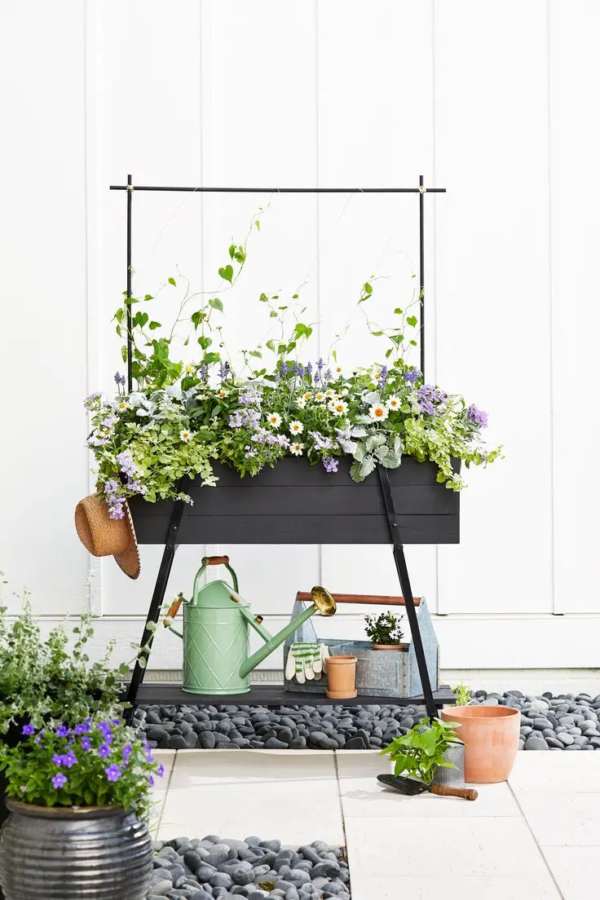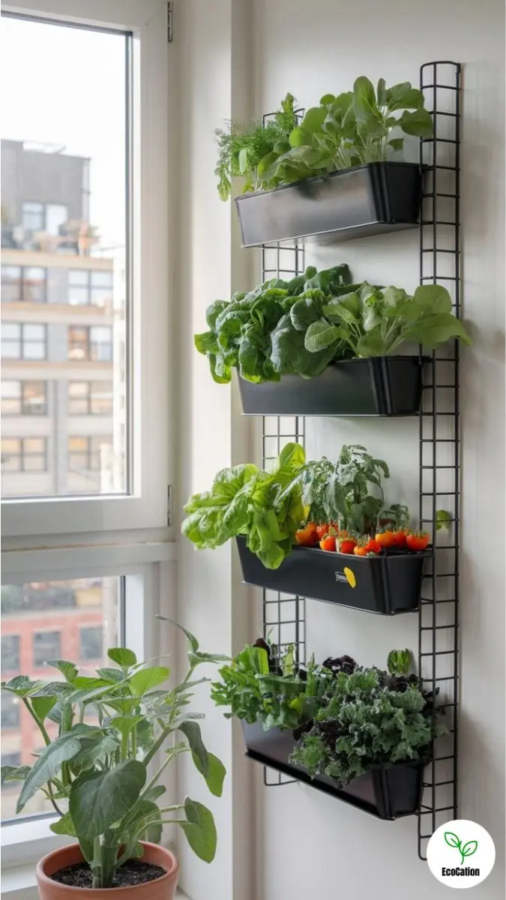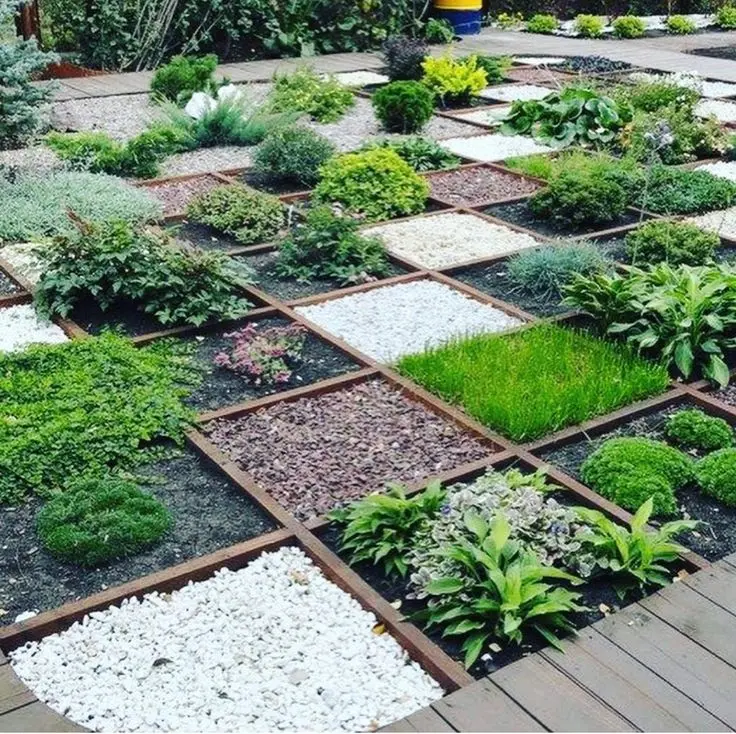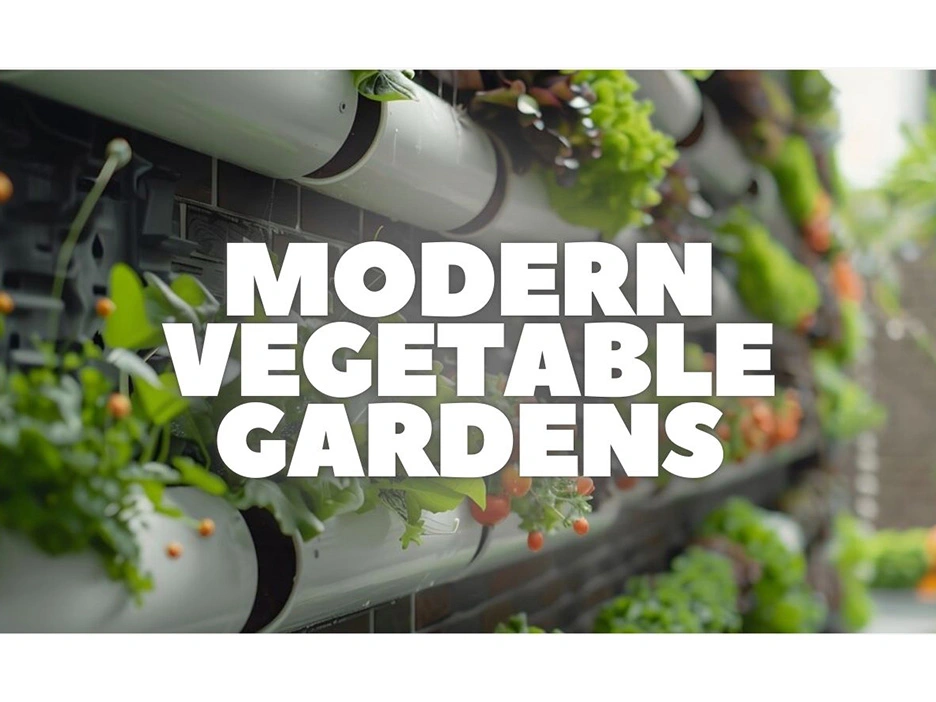In today’s fast-paced, urbanized world, vegetable gardening is experiencing a modern revival. It’s no longer limited to sprawling backyards or rural settings; contemporary vegetable gardens now blend seamlessly with modern design principles, making them practical, efficient, and visually appealing. Whether you live in a tiny apartment or have a spacious yard, here are some ideas for creating a modern vegetable garden.

1. Vertical Vegetable Gardens
Space constraints are no longer a barrier to growing your own vegetables. Vertical gardening is a game-changer, especially for urban dwellers.
- Wall-Mounted Planters: Install modular wall planters on balconies or outdoor walls to grow vegetables like lettuce, spinach, or herbs.
- Trellises and Frames: Use trellises for climbing vegetables like cucumbers, beans, or tomatoes, turning them into green walls.
- Stacked Planters: Multi-tiered planter systems allow you to grow multiple vegetables in a compact space, adding height and depth to your garden.
Vertical gardens not only save space but also create a stunning visual feature in any outdoor area.

2. Raised Garden Beds with a Modern Twist
Raised garden beds are perfect for growing vegetables in controlled conditions. Modern designs elevate these beds to new levels.
- Use sleek materials like corten steel, composite wood, or concrete for a clean, minimalist look.
- Incorporate built-in seating along the edges of raised beds to merge functionality with design.
- Create geometric layouts, such as rectangular or hexagonal beds, to give your garden a contemporary aesthetic.
Raised beds also improve soil drainage and make gardening more accessible by reducing the need to bend over.
3. Smart Gardening Solutions
Integrate technology into your modern vegetable garden to make it smarter and more efficient.
- Self-Watering Systems: Automated drip irrigation or self-watering planters ensure your vegetables get consistent hydration.
- Smart Sensors: Use devices that monitor soil moisture, temperature, and light levels to optimize growing conditions.
- Grow Lights: For indoor vegetable gardens, LED grow lights provide the necessary light spectrum for plant growth, enabling year-round harvests.
These tech solutions help even beginners succeed in vegetable gardening.

4. Container Gardening with Style
Modern vegetable gardens embrace portability and flexibility through container gardening.
- Choose stylish pots and containers in metallic finishes, matte ceramics, or bold colors to complement your space.
- Grow root vegetables like carrots, radishes, or potatoes in deep pots, and plant herbs or cherry tomatoes in smaller ones.
- Group containers in clusters for a cohesive look or arrange them along pathways or on shelves for a vertical effect.
Containers also allow you to move your plants to optimize sunlight or protect them during harsh weather.

5. Edible Landscaping
Combine aesthetics and functionality by incorporating vegetables into your landscaping design.
- Use leafy greens like kale, Swiss chard, or red cabbage as decorative borders.
- Grow climbing vegetables on pergolas or archways for a natural canopy.
- Mix vegetables with flowers and ornamental plants to create a harmonious, lush garden that doesn’t look like a traditional vegetable patch.
Edible landscaping blurs the line between form and function, resulting in a space that is both beautiful and productive.

6. Hydroponics and Aquaponics
Modern vegetable gardens often explore innovative growing methods like hydroponics and aquaponics, which eliminate the need for soil.
- Hydroponic Systems: Grow vegetables like lettuce, peppers, or herbs in nutrient-rich water systems. These setups can be vertical, making them ideal for small spaces.
- Aquaponic Systems: Combine fish farming with vegetable gardening. The fish waste provides nutrients for the plants, creating a self-sustaining ecosystem.
These systems are not only efficient but also eco-friendly, using less water than traditional gardening methods.

7. Indoor Vegetable Gardens
For those with limited outdoor space, modern indoor vegetable gardens bring the farm-to-table experience right into your home.
- Install kitchen garden systems that combine planters with grow lights, perfect for herbs, microgreens, or small vegetables.
- Use windowsill planters for vegetables like lettuce, green onions, or basil.
- Invest in compact indoor hydroponic kits that are as much a piece of décor as a functional garden.
Indoor gardens allow you to enjoy fresh produce all year, regardless of the season or weather.
8. Sustainable Practices for Modern Gardens
A modern vegetable garden isn’t just about aesthetics—it’s about sustainability too.
- Composting: Set up a compost bin to recycle kitchen scraps and enrich your soil.
- Rainwater Harvesting: Use rain barrels to collect water for your plants, reducing your reliance on tap water.
- Recycled Materials: Upcycle old pallets, crates, or even bathtubs as planters for your vegetables.
By incorporating these practices, you can make your garden eco-friendly and cost-effective.

9. Creative Layouts and Zones
Design your vegetable garden with intention by dividing it into zones or creating unique layouts.
- Incorporate stepping stones or pathways to define planting areas.
- Use color-coded markers or plant labels to organize vegetables by type or growth cycle.
- Designate a section for seasonal vegetables, allowing for rotation and variety throughout the year.
These layouts not only improve functionality but also add structure and style to your garden.
A modern vegetable garden is more than just a place to grow food—it’s an expression of creativity and innovation. By embracing vertical gardening, stylish containers, sustainable practices, and smart technology, you can create a productive yet visually stunning space. Whether indoors or outdoors, large or small, a modern vegetable garden allows you to reconnect with nature and enjoy the satisfaction of homegrown produce in the most stylish way possible.
For further design updates please visit our YouTube Channel:


